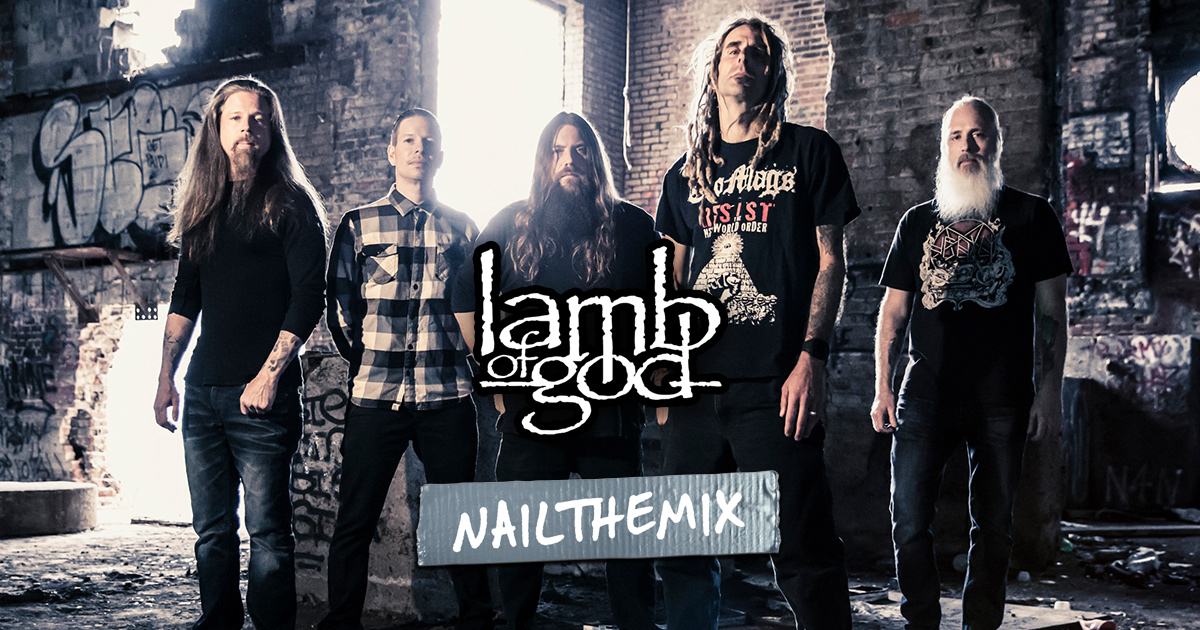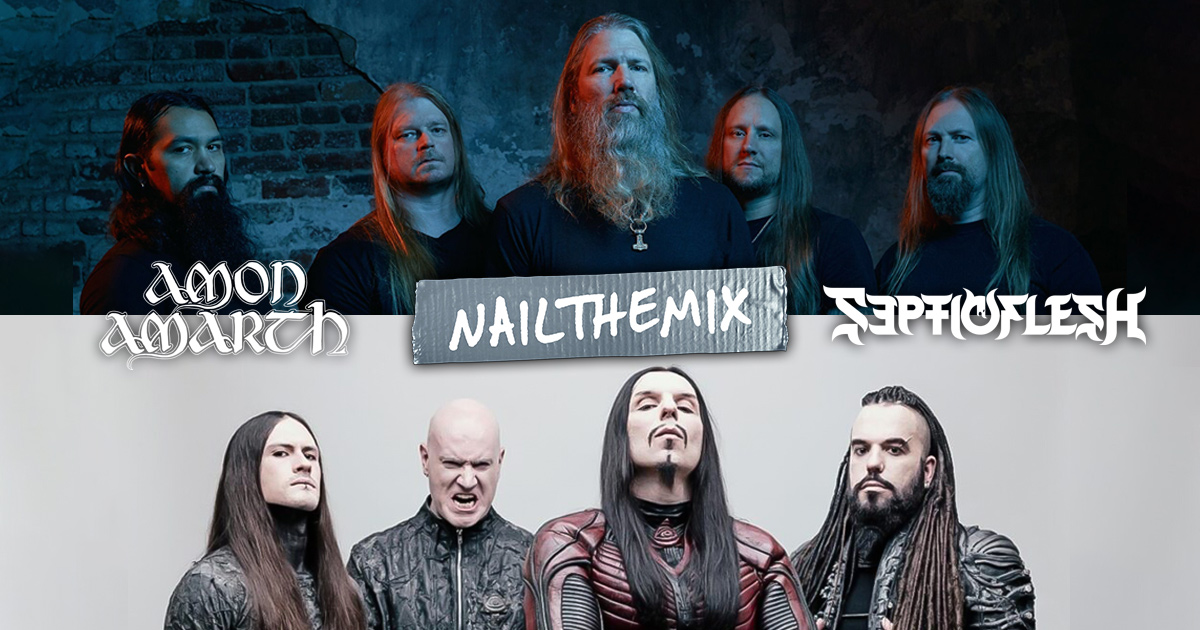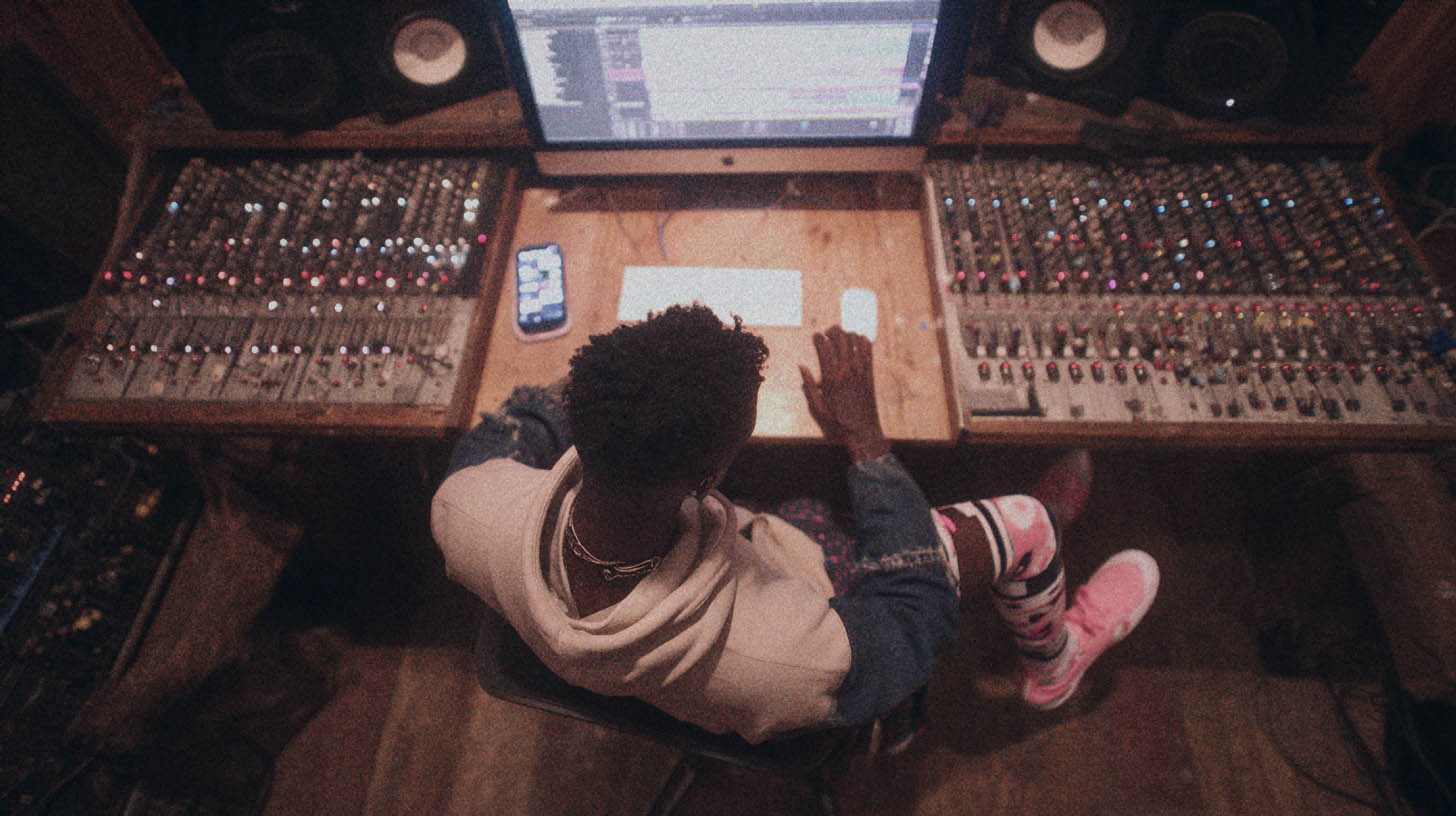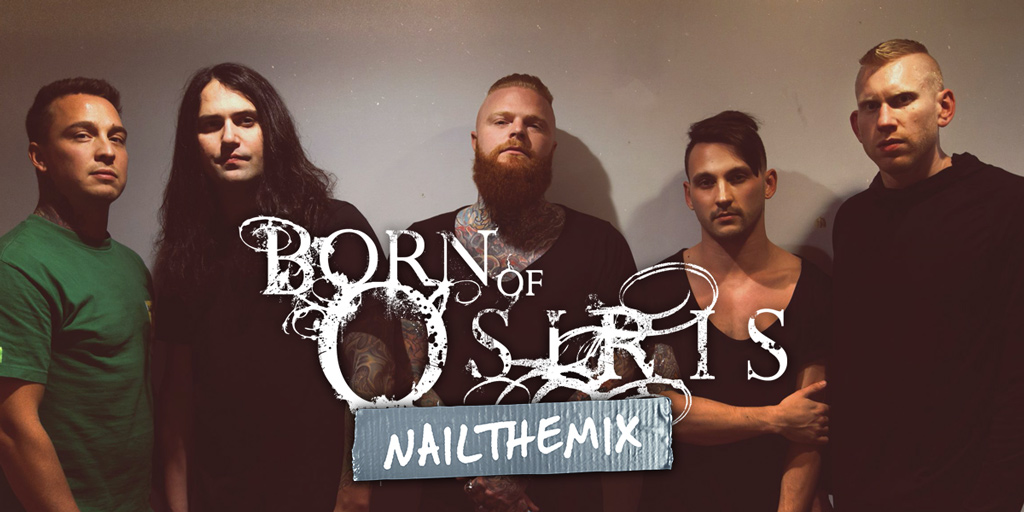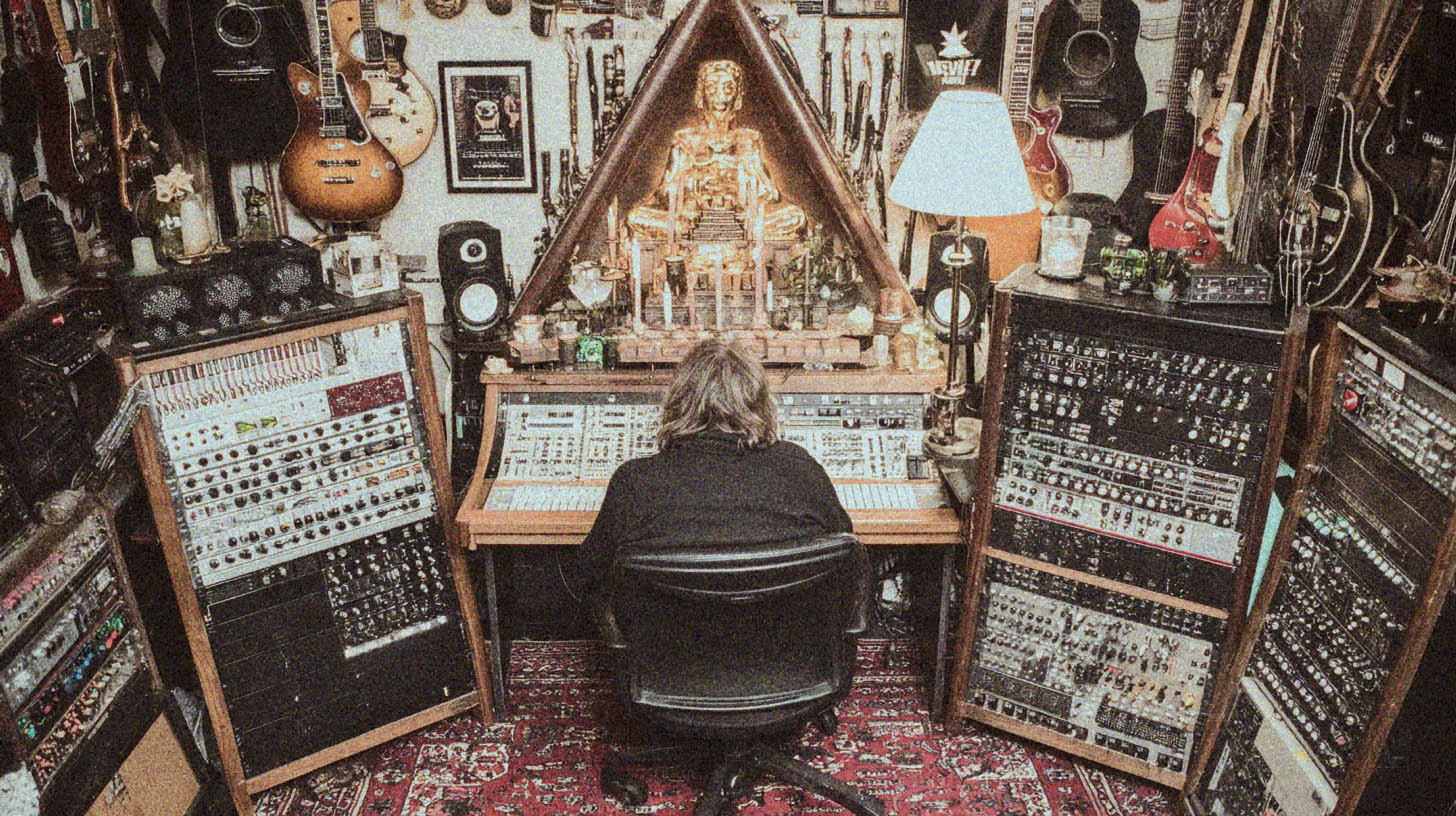
Mixing Lorna Shore’s Wall of Guitars with Josh Schroeder
Nail The Mix Staff
Let’s be honest, Lorna Shore’s guitar work on “To The Hellfire” is a masterclass in symphonic, technical, and brutal density. With what sounds like twenty different riffs and layers firing at once, you have to wonder: how do you keep that from turning into a chaotic mess? How do you create clarity when you’re playing every note in the scale simultaneously?
Producer Josh Schroeder, the man behind the board for this epic track, cracked open his session to show exactly how he wrangled this beast. It’s not about magic tricks, but a philosophy of strategic layering, intentional nastiness, and surgical mixing decisions. Let’s dive into how he built Lorna Shore’s massive wall of sound.
The “Sum of the Parts” Philosophy
The first hurdle is a mental one. When you have this many layers, you have to stop thinking about each individual part. Josh compares it to baking a cookie—you don’t taste the salt by itself, but you’d definitely notice if it was gone. The same principle applies here. Some guitar layers aren’t meant to be heard distinctly; they’re there to be felt, adding momentum and a little extra “something” to the main riffs.
This is achieved by stacking multiple interesting parts:
- The main rhythm riffs.
- An octave layer that adds momentum.
- Symphonic, black metal-style lead melodies.
- Ambient pads and textures.
Each layer contributes to the whole. The challenge isn’t making every layer audible, but making the sum of all layers powerful and coherent.
Dirty It Up: Adding Intentional “Crud”
One of the biggest mistakes in modern metal production is chasing a tone that’s too clean and sterile. Heaviness often lives in the imperfections. Josh actively fights against overly pleasant sounds by introducing intentional grit and harshness, a key ingredient in the Lorna Shore guitar tone.
The Fortin “Crud” Bus
To achieve this, Josh employs a killer parallel processing technique. He sends the main rhythm guitars to an auxiliary bus and slaps on a Fortin amp sim plugin. The goal isn’t to create a full-range tone but to dial in a nasty, “cruddy” layer that’s almost all top-end fizz and aggression.
Listen to the main rhythms without it, and they sound smooth—maybe even too smooth. Blend in that Fortin bus, and you get an instant injection of crust. It’s a harshness inspired by old-school black metal that gives the riffs a visceral, nasty edge. It proves that heavy music isn’t supposed to be entirely pleasant. Sometimes you need to add dirt to make it hit harder.
Crafting the Core Tone: Kemper, EQ, and Collaboration
While adding grit is crucial, you first need a solid foundation. Josh’s approach combines a legendary amp profile with meticulous, dynamic EQ.
The Foundation: A Battle-Tested 6505 Profile
The core of the guitar tone comes from a Kemper profile of a Peavey 6505. This isn’t just any stock profile; it’s one Josh captured years ago from a killer-sounding amp owned by Jason from the bands Two by Four and Frost Coffin.
But he stresses that this is just a starting point. Simply loading the profile isn’t enough. He spends significant time with the guitarist, tweaking the gain, EQ, and other settings on the Kemper just like a real amp. They dial it in together, listening on studio monitors and floor wedges, to find a sound that inspires the player while still serving the mix.
Dynamic and Surgical EQ
Once the tracks are recorded, the real carving begins on the rhythm guitar bus. With so many layers, certain frequencies inevitably start to build up and get muddy.
- Dynamic Low-End Control: Instead of a static EQ scoop, Josh uses a multi-band compressor (like a Pro-MB) to duck the low-end mud on the guitars only when it builds up. This keeps the tone full during sparser sections but automatically cleans it up to make space for the kick and bass during fast palm mutes. This is one of many advanced compression secrets that can transform a mix.
- Targeted Boosts: After controlling the lows, he might add back some body in the mid-range to compensate, ensuring the guitars don’t sound hollowed out.
- Surgical Cleanup with Soothe: To manage harshness without killing the aggression, Josh uses Soothe2. It’s applied very subtly to catch and tame any extra “junk” frequencies and fizzy resonances that pop out, especially when you have dozens of tracks stacked together. Mastering these kinds of EQ strategies for mixing modern metal is essential for achieving professional clarity.
Taming the Beast: Bus Processing and Dynamic Automation
Cohesion is key. All the individual guitar tracks, including rhythms, leads, and ambient layers, are eventually routed to a main “Six Strings” bus for final processing.
The Guitar Bus
Here, Josh applies broad strokes to glue everything together. This is where another instance of Soothe2 might be used to tame the cumulative harshness from all 25,000 guitar tracks. Any frequency buildup that wasn’t an issue on a single track can become a major problem when combined, and bus processing is the perfect place to fix it.
Sharp Turns and Hard Cuts
Lorna Shore’s music is all about extremes, and the mix needs to reflect that. Instead of letting notes and effects trail off gently between sections, Josh uses aggressive automation. For example, moving from a melodic verse into a crushing breakdown, he uses a hard volume cut on the lead bus.
There’s no reverb tail, no delay, no gentle fade—it’s just gone. This creates a sharp, jarring transition that feels like yanking the steering wheel and flying into a ditch. It’s an extreme move for an extreme band, making the next section hit with maximum impact.
Learn the Full Process from Start to Finish
These techniques—layering for feel, adding parallel grit, dynamic EQ, and aggressive automation—are just a few of the moves Josh Schroeder used to mix this monumental track. They offer a glimpse into the mindset required to mix music this dense and demanding.
Lorna Shore on Nail The Mix
Josh Schroeder mixes "To the Hellfire"
Get the Session
But seeing the concepts is one thing. Watching it all come together is another. In his full Nail The Mix session, you can watch Josh build the entire mix for “To The Hellfire” from scratch, explaining every plugin, setting, and decision along the way.
If you’re ready to move past presets and learn how the pros craft mixes for bands like Lorna Shore, Periphery, and Spiritbox, check out Nail The Mix. You get the real multi-tracks from massive songs every month and watch the original producer mix them live. It’s time to unlock your sound and see exactly how these incredible records are made. For a deep dive into this specific track, don’t miss the Lorna Shore session with Josh Schroeder.
Get a new set of multi-tracks every month from a world-class artist, a livestream with the producer who mixed it, 100+ tutorials, our exclusive plugins and more
Get Started for $1
